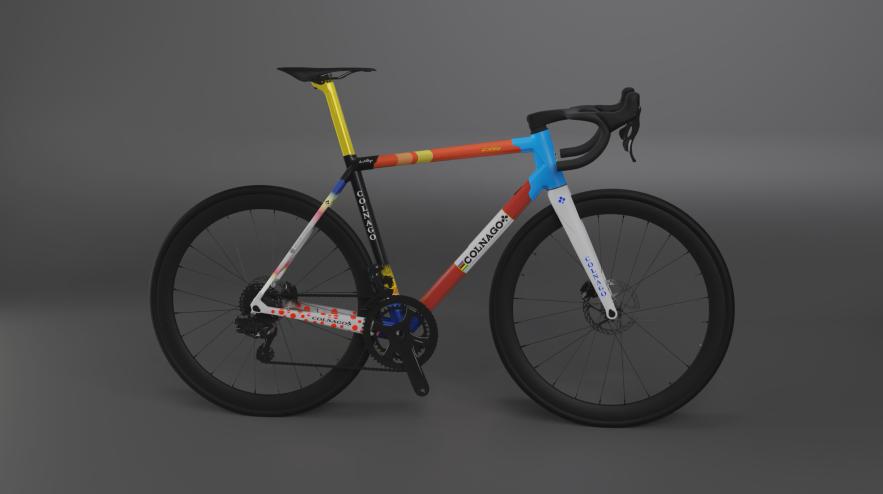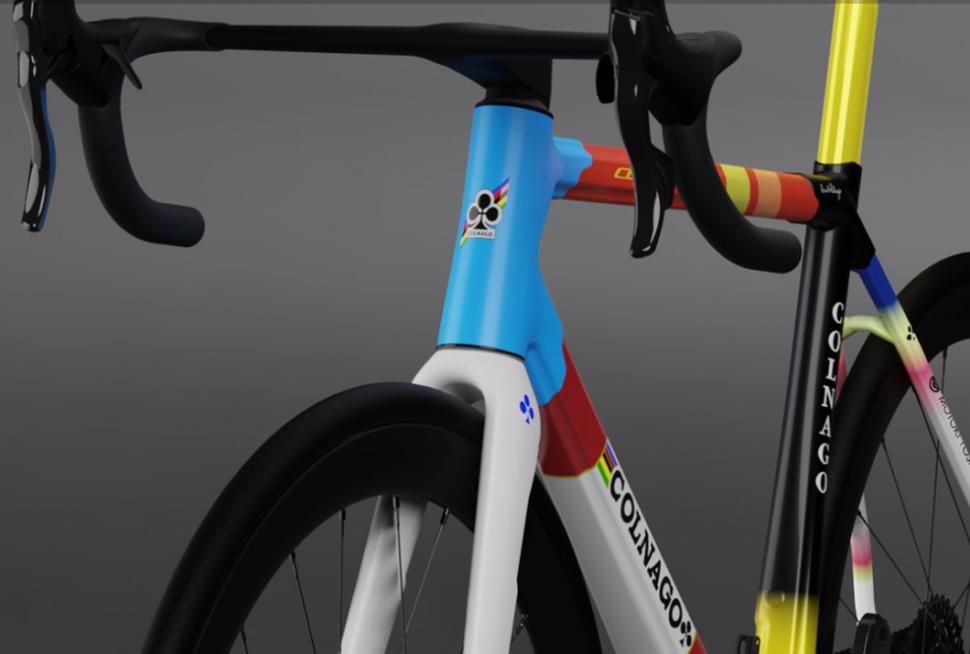- News
- Reviews
- Bikes
- Components
- Bar tape & grips
- Bottom brackets
- Brake & gear cables
- Brake & STI levers
- Brake pads & spares
- Brakes
- Cassettes & freewheels
- Chains
- Chainsets & chainrings
- Derailleurs - front
- Derailleurs - rear
- Forks
- Gear levers & shifters
- Groupsets
- Handlebars & extensions
- Headsets
- Hubs
- Inner tubes
- Pedals
- Quick releases & skewers
- Saddles
- Seatposts
- Stems
- Wheels
- Tyres
- Tubeless valves
- Accessories
- Accessories - misc
- Computer mounts
- Bags
- Bar ends
- Bike bags & cases
- Bottle cages
- Bottles
- Cameras
- Car racks
- Child seats
- Computers
- Glasses
- GPS units
- Helmets
- Lights - front
- Lights - rear
- Lights - sets
- Locks
- Mirrors
- Mudguards
- Racks
- Pumps & CO2 inflators
- Puncture kits
- Reflectives
- Smart watches
- Stands and racks
- Trailers
- Clothing
- Health, fitness and nutrition
- Tools and workshop
- Miscellaneous
- Buyers Guides
- Features
- Forum
- Recommends
- Podcast
feature
 colnago c64 nft.PNG
colnago c64 nft.PNGBike at bedtime: let’s take a look back at the first NFT bike, Colnago’s C64
Colnago became the first company within the cycling industry - as far as we know - to cash in on the growing non-fungible token (NFT) trend in which digital assets are stored on a blockchain, with the digital picture of its C64 bike fetching almost $8,600 at auction in May earlier this year.
The C64 NFT which was put up for sale on the platform Opensea.io isn’t actually a physical bike. Confused? Essentially an NFT is a piece of digital content linked to the blockchain, the digital database that underpins cryptocurrencies.
Notable things that have been sold as NFTs include Twitter CEO Jack Dorsey's first ever tweet on the platform, and back in the cycling world Wout van Aert sold his three biggest wins of 2021 - Strade Bianche, Mont Ventoux and the Champs-Elysees - as digital assets.
Even more recently, Bike Club became the “world’s first blockchain-based cycling club”, with members able to claim one of 10,000 unique avatars in the form of NFTs that cycling artist Rich Mitch has designed, serving as proof of membership.
Back to the first NFT bike... What’s so special about the image of Colnago’s C64? Well, it "combines all 67 years of historic Colnago moments into a unique NTF bike", says the iconic Italian bike manufacturer. The NFT is "becoming part of Colnago history and will never be duplicated".
It attracted just two bids, with the higher coming from user MTD-01, who now has exclusive rights in perpetuity over the image of the bicycle – but won’t, of course, be able to ride it.
What the buyer does get, however, is a digital image of a one-off design that brings together elements of:
- The Bititan bike that Abraham Olano won the World Championships on in 1995
- Anthony Charteau's Polka Dot jersey-winning C59 from the 2010 Tour de France
- The C35 TTT that won the Team Time Trial World Championship 100km in 1994
- Giuseppe Saronni's Super Profil
- Tony Rominger's Hour Record bike
- Tadej Pogačar's Tour de France-winning V3Rs
- The C40 icon of Team Mapei
However, Colnago came under criticism when the auction opened, due to the environmental impact of the computing power necessary to maintain blockchain technology (rather than the NFT itself).
This article from the Verge explains why blockchain technology and its use to determine ownership of NFTs has such a big environmental impact, mentioning among other things that Ethereum, the cryptocurrency that the Colnago was purchased in, “uses about as much electricity as the entire country of Libya.”
Anna has been hooked on bikes ever since her youthful beginnings at Hillingdon Cycle Circuit. As an avid road and track racer, she reached the heady heights of a ProCyclingStats profile before leaving for university. Having now completed an MA in Multimedia Journalism, she’s hoping to add some (more successful) results. Although her greatest wish is for the broader acceptance of wearing funky cycling socks over the top of leg warmers.
Latest Comments
- GMBasix 1 min 36 sec ago
I had a Cycliq 6 (2nd gen) which lasted a fair while before inexplicably giving up the ghost. When I was looking for replacements for front and...
- mdavidford 2 min 58 sec ago
The problem is not that he's attracting the racists. The problem is that he's attracting the ones who talk about it in public.
- paul_Onabike 3 min 9 sec ago
They also failed to mention that the car had no MOT, and was supposedly on its way to be scrapped - so should not have been on the road at all.
- brooksby 5 min 13 sec ago
Office job: eight hours a day sitting on my arse and staring at a pc monitor
- chrisonabike 20 min 11 sec ago
Just another SUV driver in the Bible there. His conveyance was like a whale - but an earlier traveller had something as roomy as an ark!...
- ktache 37 min 4 sec ago
Passenger been charged with aiding and abbetting dangerous driving...
- quiff 28 min 7 sec ago
"We currently have safe existing cycling infrastructure on the roundabout which can be easily enhanced with better signage"....
- Disgusted of Tunbridge Wells 51 min 24 sec ago
Kendo (Japanese: 剣道, Hepburn: Kendō, lit. 'sword way' or 'sword path' or 'way of the sword') is a modern Japanese martial art, descended from...
- EK Spinner 1 hour 24 min ago
So the same cop has given very different reasons for NFA to the rider and to his MP....
- mdavidford 2 hours 6 min ago
They make an ass out of... um... ptions?


Add new comment
4 comments
No incentive for Colnago to build bikes anymore if they can sell 'emporers' new bikes' to idiots...
All very reminiscent of the dot com bubble.
More money than sense if you are spending all that on a digital image.
Would be fun to speak to the buyers of these cycling related NFT's and ask if they still think it was a good descision to buy them. I'm betting they wouldn't do it again (but I don't think they'd be honest about it, lol).